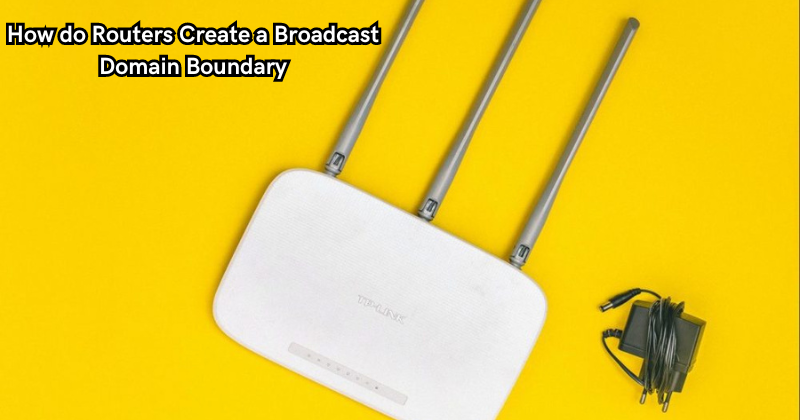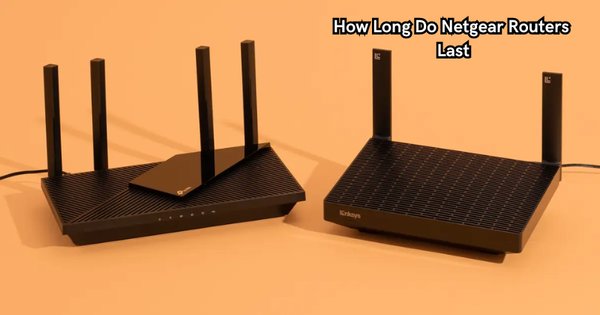Understanding how routers create a broadcast domain boundary is essential for managing network traffic efficiently and maintaining data security. Routers play a pivotal role in segmenting networks by defining distinct broadcast domains, which help control the flow of data packets and prevent broadcasts from inundating the entire network.
By establishing these boundaries, routers enable selective communication between devices within the same network while confining broadcast traffic to specific segments. This segregation optimizes network performance, minimizes congestion, and enhances overall network security by containing potential security threats within isolated domains.
In this guide, we delve into the mechanisms through which routers establish and manage broadcast domain boundaries, shedding light on the fundamental principles that underpin effective network segmentation.
We also explore the advantages of using routers to create broadcast domain boundaries and provide practical recommendations for optimizing network management.
Understanding Broadcast Domains
Broadcast domains, as the name suggests, are segments in a network where broadcasts – messages sent to every device on that segment – can reach all devices within it. Any device connected to a broadcast domain will receive and process broadcast messages, even if they are not the intended recipients.
In a network without routers or switches, all devices belong to the same broadcast domain, and every device in that network will receive any broadcasts sent.
This can result in significant congestion and reduce network performance as devices may have to process irrelevant data. Moreover, it poses a security risk as sensitive information may be exposed to unauthorized devices.
Why is a Broadcast Domain Boundary Necessary?
Routers create broadcast domain boundaries by separating network segments into distinct zones, restricting broadcast messages to specific areas.
This allows for more efficient and organized data transfer within a network while minimizing the potential for congestion and unauthorized access.
A broadcast domain boundary also helps identify potential security threats as it limits the scope of network attacks to specific segments rather than affecting the entire network.
Moreover, by isolating network devices into separate domains, it becomes easier to manage and troubleshoot any issues that may arise.
How Routers Create Broadcast Domain Boundaries
Routers establish boundaries for broadcast domains via a method known as network segmentation. A broadcast domain constitutes a logical partition within a computer network where all nodes can communicate with each other via broadcast messages at the data link layer.
Routers function at the network layer (Layer 3) of the OSI model and are employed to segregate broadcast domains. Here's how routers create broadcast domain boundaries:
Packet Forwarding:
Routers use packet-forwarding algorithms to redirect data packets between different networks. These algorithms determine the optimal path for a packet to reach its destination, taking into account factors such as network congestion and device availability.
By sending packets through specific paths, routers create boundaries between broadcast domains while allowing communication between them when necessary. The router forwards packets based on their destination IP address, which helps in identifying the appropriate network segment for delivery.
Logical Addressing:
To facilitate data transfer between devices on different networks, routers use logical addressing.
Logical addresses, such as IP addresses, are unique identifiers assigned to each device connected to a network and provide a way for routers to determine which broadcast domain a particular device belongs to.
By analyzing these logical addresses, routers can direct data packets to their intended destination within a specific broadcast domain.
Routing Tables:
Routing tables are critical elements in the process of creating broadcast domain boundaries. These tables contain information about network topology, including logical addresses and paths to different networks.
By referencing this data, routers can identify which devices belong to which broadcast domains and efficiently manage data transfer between them.
Broadcast and Multicast Isolation:
Routers can also use broadcast and multicast isolation techniques to create boundaries between broadcast domains.
By restricting the forwarding of broadcast and multicast packets, routers ensure that these messages do not cross into different networks, effectively creating separate broadcast domains. Forward broadcasts and multicast traffic are only within the broadcast domain, which helps manage network congestion and reduce security risks.
Subnetting:
Subnetting is another method used by routers to segment networks into smaller subnetworks. By dividing a larger network into multiple subnets, routers can create broadcast domain boundaries between them.
This enables more efficient data transfer within the network while minimizing the scope of potential security threats and reducing congestion. They do not forward broadcast traffic between different subnets, further enhancing network performance. During congestion, routers can also prioritize certain subnets over others, ensuring that critical data is always given the highest priority.
IP Addressing:
By assigning unique IP addresses to each device, routers can also create broadcast domain boundaries. By analyzing the network portion of an IP address, a router can determine which devices belong to the same broadcast domain and efficiently manage data transfer between them.
Practical Tips for Optimizing Network Management with Router Broadcast Domain Boundaries
Some practical ways to optimize network management with router broadcast domain boundaries include:
- Regularly update routing tables to ensure efficient data transfer between broadcast domains.
- Use subnetting to segment networks into smaller subnets and reduce network congestion.
- Implement access control lists (ACLs) on routers to control the flow of traffic between different broadcast domains.
- Monitor network performance and adjust boundary configurations as needed to increase efficiency.
- Use logical addressing and routing protocols to ensure proper data transfer between broadcast domains.
- Regularly review network topology and adjust routing configurations accordingly to optimize performance.
From broadcast packets to logical addressing, routers play a crucial role in creating and maintaining broadcast domain boundaries. By implementing efficient routing techniques and regularly monitoring network performance, organizations can ensure secure and optimal data transfer within their networks.
Challenges of Broadcast Domain Boundaries
While broadcast domain boundaries offer many benefits, they also present some challenges that network administrators must be aware of:
Network design limitations:
Designing and configuring broadcast domain boundaries can be complex and time-consuming, especially in larger networks. Network administrators must carefully plan and implement these boundaries to ensure optimal performance.
Increased network complexity:
Creating multiple broadcast domains within a network adds another layer of complexity that requires careful management. This may involve additional training for IT personnel or the use of advanced configuration tools.
Security risks:
While broadcast domain boundaries can help isolate potential security threats, they are not foolproof. If an attacker gains access to one broadcast domain, they may be able to use that foothold to infiltrate other domains. Network administrators must still implement proper security measures such as firewalls and intrusion detection systems to protect against these risks.
Performance impact:
Creating multiple broadcast domains can also have a performance impact on the network. As data packets are redirected through different paths, latency and congestion may increase, affecting overall network performance.
Network administrators must carefully balance network design to ensure efficient data transfer while maintaining security and segmentation. Direct broadcast traffic to the correct ports and subnets can also help mitigate performance issues.
Managing IP addresses:
With the use of logical addressing, network administrators must carefully manage IP addresses to avoid conflicts and ensure proper communication between devices within a single broadcast domain. This can become more challenging as the network grows and more devices are added.
Advantages of Using Router Broadcast Domain Boundaries
Despite the challenges, using router broadcast domain boundaries offers several advantages for network management:
Improved Network Performance:
By segmenting networks into smaller broadcast domains, routers can balance network traffic and prevent congestion.
This results in improved performance and faster data transfer between devices within the same domain. When a router receives a broadcast packet, it only sends the packet to devices within the same broadcast domain, reducing unnecessary traffic and optimizing network resources.
Scalability:
Router broadcast domain boundaries allow for easier network scalability as new devices and networks can be added without causing disruptions to existing networks. This also allows for more efficient troubleshooting and maintenance.
Enhanced Security:
Creating broadcast domain boundaries helps isolate potential security threats and limit their impact on the entire network. By controlling the flow of traffic between different domains, routers can prevent unauthorized access to sensitive data and resources.
Greater Network Flexibility:
By using broadcast domain boundaries, network administrators can easily add or remove devices without disrupting the entire network. This allows for greater scalability and flexibility in managing network resources.
Efficient Resource Utilization:
With proper management of broadcast domains, routers can optimize resource allocation and ensure critical data receives the highest priority. This enables organizations to make the most of their network resources and improve overall efficiency.
These are just some of the many advantages that come with implementing router broadcast domain boundaries in network management. By carefully designing and managing these boundaries, organizations can improve network performance, security, and scalability while optimizing resource utilization.
FAQs
How do routers handle Ethernet frames within a broadcast domain?
Routers examine Ethernet frames to determine the destination IP address and forward the frames to the appropriate interface within the broadcast domain. This process ensures that data reaches its intended recipient while maintaining network segmentation and security.
What is a MAC address table, and how does it relate to broadcast domains?
A MAC address table is a database stored in a switch that maps MAC addresses to specific ports. Routers use this table to determine the destination of data packets within the broadcast domain, facilitating efficient communication between devices.
What is the process of forwarding broadcasts in a network?
When a device sends a broadcast message, the router receives it on one interface and forwards it to all other interfaces within the same broadcast domain. This ensures that the broadcast reaches all devices on the local network segment.
How are broadcast frames handled within a broadcast domain?
Broadcast frames are data packets addressed to all devices on a network segment. Routers within the broadcast domain forward these frames to all devices, allowing them to process the broadcast message.
Conclusion
In conclusion, the strategic role of routers in creating broadcast domain boundaries is fundamental to network efficiency and security.
By employing IP addressing and interface segmentation, routers effectively isolate network segments, preventing broadcast storms and optimizing data transmission. The meticulous routing decisions made by routers ensure that broadcast traffic remains contained within specific domains, enhancing network performance by reducing congestion and improving data delivery.
Understanding how routers establish broadcast domain boundaries is paramount for network administrators and IT professionals seeking to maintain a robust network infrastructure that prioritizes data integrity, efficient communication, and secure data transmission.



